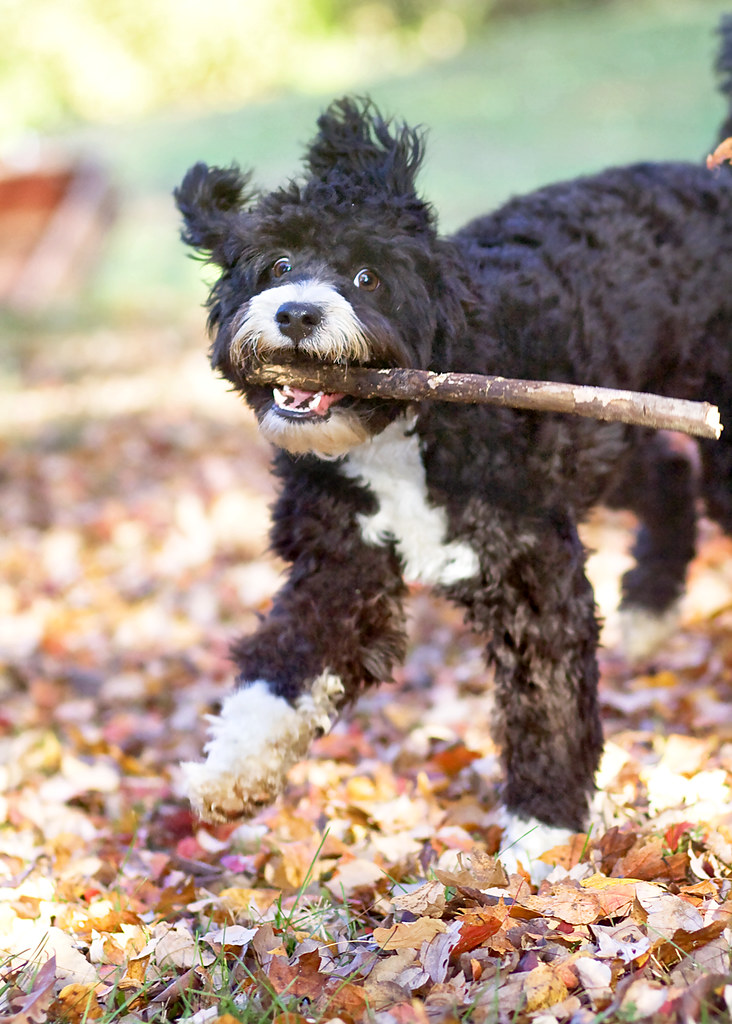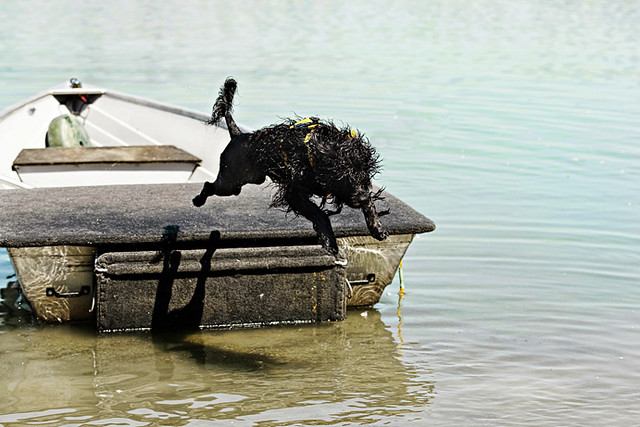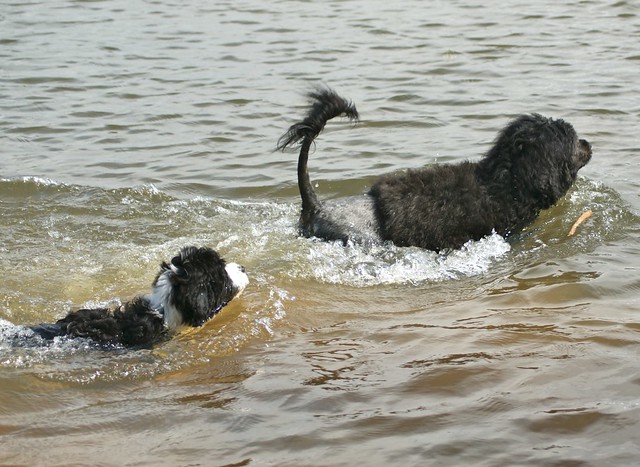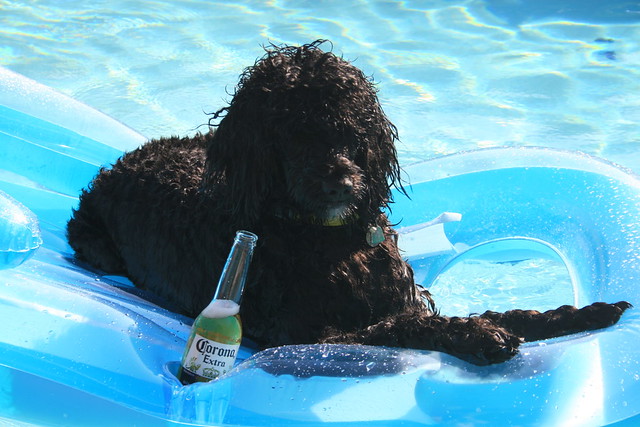The Portuguese Water Dog: From the Russian Steppes to The White House
Sunday, 23 August 2020
Until the announcement on the 11 April 2009 about the breed of dog that President Obama and his family were to welcome in to the White House, little was known about the Portuguese Water Dog. Yet the fact that Bo (as he became known) was soon ensconced in the White House is, for his breed, something just short of a miracle. Behind the shaggy good looks there lies a remarkable story of species survival. By the 1930s the dog was on the verge of extinction.
Arguments abound about the origins of the Portuguese Water Dog with many maintaining that the first early examples of the species appeared on the Russian Steppes around 700 BC. If this is the case, one can only wonder whether the irony is lost on President Obama: the dog that became part of his family has its origins in what was for many years called the USSR?
The theory goes that some were caught (or adopted perhaps) by Berbers whose slow population of the North African coast eventually meant that the dog arrived in Portugal a thousand years or so later. Others argue that it was more likely to be the Visigoths on their pan-European ‘vacation’ of 400 AD who took the dogs with them to the Iberian Peninsula. Either way, although it had persevered through the centuries, by the 1930s the dog was on the verge of extinction.
Vasco Bensuade was the Onassis of Portugal and during the country’s dark days in the nineteen thirties, he sought out remaining examples of the breed from local fishermen. His idea was to re-establish the breed by conducting a structured breeding program. As well as the marvelous characteristics of the animal, it was important to him that the Portuguese Water Dog (or PWD as it is sometimes known for the sake of alacrity) remained a vital breed. After all, it had played an important role, historically, in the lives and work of the fishermen living along the coast of Portugal for countless generations.
It should not be forgotten that the PWD was bred originally as a working dog. Whether it came before or during its adaption to working life, the Portuguese Water Dog has webbed feet which help make it the remarkable swimmer that it is. In fact in 1297 a monk described how one pulled a drowning man from the water. Portuguese fisherman, until its ‘almost but not quite’ demise used the adventurous, loyal and gregarious dogs as an incredibly useful working companion.
The dogs pursued a variety of tasks when working. They were used primarily as retrievers and as couriers between fishing boats. It is also maintained that they were used to actually herd fish in to nets on the shoreline, something this energetic and agile dog would no doubt have enjoyed doing immensely. The dogs remain fantastic swimmers to this day and adore water.
Perhaps because of the proximity it had to its fisherman master, the dog tends to bond with a single family member more so than to a family as a unit. However, the question does remain whether or not the dog is a good choice for a working family such as the Obamas. They love company and can, if unattended, get in to what might be termed trouble.
They get bored and, like many humans, when this happens their thoughts can turn to food and its acquisition. Highly intelligent, they have been known (however well trained they are) to swipe food off worktops when the owner’s back is turned. They sometimes even learn how to open cabinet doors. In other words, these dogs need a lot of attention – they would not necessarily be happy lying on a couch at the White House watching re-runs of The Fresh Prince.
Perhaps the life of Bo was for a while somewhat sedentary. President Obama admitted in 2012 (at the Kids’ State Dinner) that Bo had been placed on a diet.
Something even less known about the dog is that it is also available in white. It is thought that the poodle and the PWD developed from the same gene and the cut of this particular example shows clearly the connection between the two species.
The Portuguese Water Dog also comes in brown...
Over half of the PWDs on the planet are descended from the same dog. His name was Leão and lived for eleven years from 1931, becoming a prolific reproducer. This fact alone means that breeders have to be very careful about which animals they introduce to each other. It should also, if you are considering riding the PWD bandwagon, mean that you should be very careful about from whom you buy your future Captain’s Mate.
There is little – if anything – to suggest that the breed is hypo-allergenic, one of the cited reasons for the choice of the President.
Arguments abound about the origins of the Portuguese Water Dog with many maintaining that the first early examples of the species appeared on the Russian Steppes around 700 BC. If this is the case, one can only wonder whether the irony is lost on President Obama: the dog that became part of his family has its origins in what was for many years called the USSR?
The theory goes that some were caught (or adopted perhaps) by Berbers whose slow population of the North African coast eventually meant that the dog arrived in Portugal a thousand years or so later. Others argue that it was more likely to be the Visigoths on their pan-European ‘vacation’ of 400 AD who took the dogs with them to the Iberian Peninsula. Either way, although it had persevered through the centuries, by the 1930s the dog was on the verge of extinction.
It should not be forgotten that the PWD was bred originally as a working dog. Whether it came before or during its adaption to working life, the Portuguese Water Dog has webbed feet which help make it the remarkable swimmer that it is. In fact in 1297 a monk described how one pulled a drowning man from the water. Portuguese fisherman, until its ‘almost but not quite’ demise used the adventurous, loyal and gregarious dogs as an incredibly useful working companion.
Perhaps because of the proximity it had to its fisherman master, the dog tends to bond with a single family member more so than to a family as a unit. However, the question does remain whether or not the dog is a good choice for a working family such as the Obamas. They love company and can, if unattended, get in to what might be termed trouble.
They get bored and, like many humans, when this happens their thoughts can turn to food and its acquisition. Highly intelligent, they have been known (however well trained they are) to swipe food off worktops when the owner’s back is turned. They sometimes even learn how to open cabinet doors. In other words, these dogs need a lot of attention – they would not necessarily be happy lying on a couch at the White House watching re-runs of The Fresh Prince.
Perhaps the life of Bo was for a while somewhat sedentary. President Obama admitted in 2012 (at the Kids’ State Dinner) that Bo had been placed on a diet.
Something even less known about the dog is that it is also available in white. It is thought that the poodle and the PWD developed from the same gene and the cut of this particular example shows clearly the connection between the two species.
The Portuguese Water Dog also comes in brown...
Over half of the PWDs on the planet are descended from the same dog. His name was Leão and lived for eleven years from 1931, becoming a prolific reproducer. This fact alone means that breeders have to be very careful about which animals they introduce to each other. It should also, if you are considering riding the PWD bandwagon, mean that you should be very careful about from whom you buy your future Captain’s Mate.
There is little – if anything – to suggest that the breed is hypo-allergenic, one of the cited reasons for the choice of the President.
Give a Gift
If you enjoyed this article, please consider making a gift to help Ark In Space to continue to bring you fascinating features, photographs and videos.
Thank you!

























